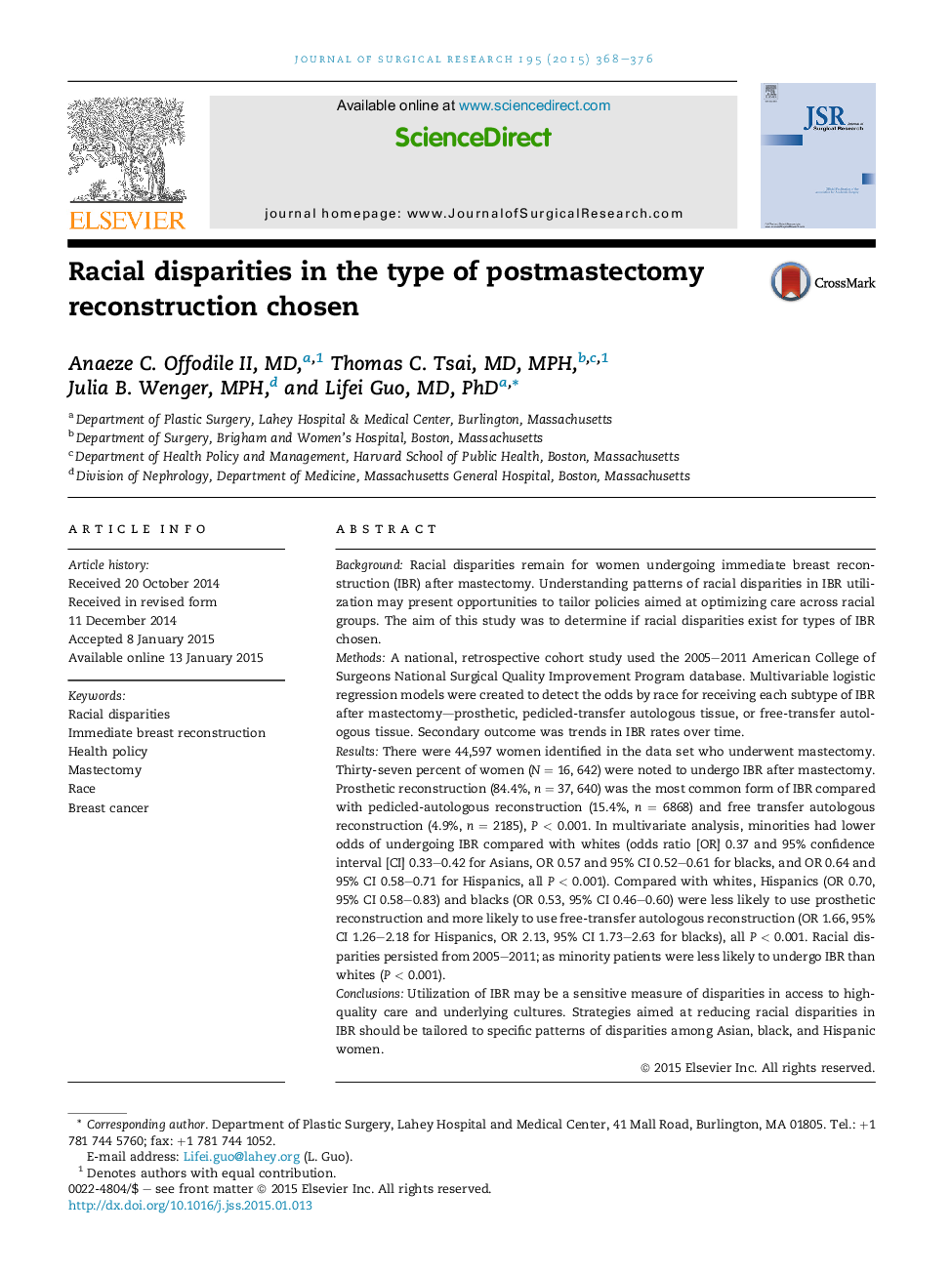| کد مقاله | کد نشریه | سال انتشار | مقاله انگلیسی | نسخه تمام متن |
|---|---|---|---|---|
| 4299910 | 1288404 | 2015 | 9 صفحه PDF | دانلود رایگان |
BackgroundRacial disparities remain for women undergoing immediate breast reconstruction (IBR) after mastectomy. Understanding patterns of racial disparities in IBR utilization may present opportunities to tailor policies aimed at optimizing care across racial groups. The aim of this study was to determine if racial disparities exist for types of IBR chosen.MethodsA national, retrospective cohort study used the 2005–2011 American College of Surgeons National Surgical Quality Improvement Program database. Multivariable logistic regression models were created to detect the odds by race for receiving each subtype of IBR after mastectomy—prosthetic, pedicled-transfer autologous tissue, or free-transfer autologous tissue. Secondary outcome was trends in IBR rates over time.ResultsThere were 44,597 women identified in the data set who underwent mastectomy. Thirty-seven percent of women (N = 16, 642) were noted to undergo IBR after mastectomy. Prosthetic reconstruction (84.4%, n = 37, 640) was the most common form of IBR compared with pedicled-autologous reconstruction (15.4%, n = 6868) and free transfer autologous reconstruction (4.9%, n = 2185), P < 0.001. In multivariate analysis, minorities had lower odds of undergoing IBR compared with whites (odds ratio [OR] 0.37 and 95% confidence interval [CI] 0.33–0.42 for Asians, OR 0.57 and 95% CI 0.52–0.61 for blacks, and OR 0.64 and 95% CI 0.58–0.71 for Hispanics, all P < 0.001). Compared with whites, Hispanics (OR 0.70, 95% CI 0.58–0.83) and blacks (OR 0.53, 95% CI 0.46–0.60) were less likely to use prosthetic reconstruction and more likely to use free-transfer autologous reconstruction (OR 1.66, 95% CI 1.26–2.18 for Hispanics, OR 2.13, 95% CI 1.73–2.63 for blacks), all P < 0.001. Racial disparities persisted from 2005–2011; as minority patients were less likely to undergo IBR than whites (P < 0.001).ConclusionsUtilization of IBR may be a sensitive measure of disparities in access to high-quality care and underlying cultures. Strategies aimed at reducing racial disparities in IBR should be tailored to specific patterns of disparities among Asian, black, and Hispanic women.
Journal: Journal of Surgical Research - Volume 195, Issue 1, 1 May 2015, Pages 368–376
